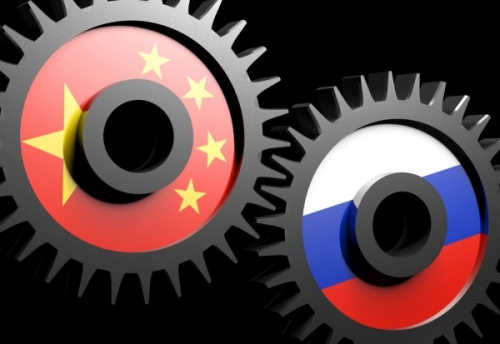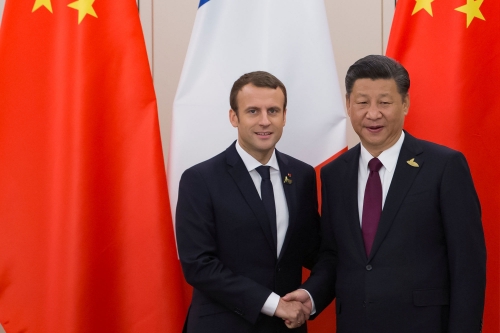Nous sommes constamment exposés à des flux de messages médiatiques. Il est quasiment impossible de s’en protéger. Celui qui serait sous-exposé, en n’ayant pas la télévision par exemple, aurait toute les chances de passer pour un original et de subir un processus de désocialisation. Pour être « intégré », il faut en effet connaître des codes et avoir des références qui sont souvent le produit de messages médiatiques. Impossible, par exemple, de participer à certaines conversations si l’on n’a pas regardé l’OM à la télé, si l’on ne connaît pas les chansonniers à la mode, si l’on n’a pas vu le nouveau film de Woody Allen, ou si l’on ne peut commenter les propos philosophiques de Cyril Hanouna.
Cette avalanche de messages médiatiques impose progressivement dans les esprits une représentation de la réalité qui paraît plus réelle que le réel. Il s’agit bien sûr d’une réalité falsifiée qui ne représente qu’elle-même et qui crédibilise « notre » modèle de société. Le problème est que cette réalité falsifiée apparaît de plus en plus comme la seule réalité et que c’est en fonction de celle-ci, et pas du vrai réel, que les « décideurs » prennent leurs décisions. Même ceux qui construisent cette réalité falsifiée sont aujourd’hui dans l’obligation psychologique de la prendre comme critère, comme référence et comme justification de leurs choix politiques, géopolitiques, sociétaux ou économiques. Nous aboutissons à un monde kafkaïen qui ne peut à terme que se fracasser sur le monde réel qui, bien que nié, existe toujours.
Prenons quelques exemples pour être plus clair.
On sait que la propagande clintonienne sur les relations de Donald Trump avec la Russie, puis sur l’ingérence russe dans les élections américaines, a été reprise par l’ensemble des médias occidentaux. Ce discours de propagande, qui ne repose sur aucun fait précis, dont le contenu s’apparente à un dénigrement de cours de récréation et qui, dans sa première mouture, se réduit à un simple élément de langage politicien, est indissociable des dernières élections présidentielles américaines. Ce discours consécutif à la campagne électorale et lié à la politique intérieure américaine a été repris, gonflé, constamment répété et agrémenté de nouvelles « révélations » sur le complot russe à seule fin d’orienter l’élection puis de neutraliser le président élu. Ce qui n’était à l’origine qu’une stratégie de communication politique destinée à retourner l’opinion publique en faveur d’Hillary Clinton est devenue au fil des mois, à force d’être récitée par toutes les télévisions, tous les journalistes, tous les politiciens, tous les journaux, une vérité en soi. Une vérité incontestable : la réalité à partir de laquelle il convenait de raisonner et d’appréhender les relations avec la Russie !
Cette description volontairement falsifiée de la réalité, simple opération de propagande électorale à l’origine, a très vite eu des répercussions sur la politique extérieure américaine. Comment, si l’on tient pour vrai le complot russe, proposer un « rapprochement » avec la Russie ? Comment, bien que les nécessités géopolitiques et les risques de guerre l’imposent, entamer des discussions avec Vladimir Poutine ? Les Etats-uniens sont prisonniers du système de représentation qu’ils ont fabriqué. Au risque d’une guerre avec la Russie, ils ne peuvent plus en sortir sans perdre la face.
La réalité falsifiée a donc un impact certain sur la politique étrangère des pays occidentaux. Cette pseudo-réalité est ici une construction purement politico-médiatique. Mais La représentation falsifiée de la réalité peut se doter aussi d’un habillage scientifique qui la rendra plus crédible. Ainsi du discours sur le changement climatique d’origine anthropique et la transition énergétique.
Ce discours, véritable bruit de fond de la communication médiatique, s’apparente davantage au discours d’une Eglise avec son credo, ses hérétiques et ses excommuniés, qu’à un discours véritablement scientifique. Quand les thèses divergentes ne peuvent ni se faire entendre, ni même s’exprimer, alors le discours qui ne se laisse pas contester sort du domaine de la science pour entrer dans celui des représentations religieuses. Or les politiciens, sans l’avoir étudié, « croient » au système de représentation de la réalité proposé de manière totalitaire par le GIEC. Ils croient qu’il y a d’une part un changement climatique et que d’autre part l’homme en est l’unique responsable. Leur action découlera non d’un jugement éclairé après un libre débat mais d’une foi dans l’énoncé de vérités révélées dans les bibles médiatiques. Or, ce système de représentation médiatisé entraîne un certain nombre de choix qui pourraient s’avérer catastrophiques. En effet, le réel-vrai nous dit que l’humanité a besoin d’énergie pour subvenir à ses besoins, que l’énergie, notamment fossile, a tendance à se raréfier ou à devenir moins accessible, qu’il n’existe pas pour le moment de source d’énergie qui pourrait remplacer le pétrole et le gaz. Or, dans la réalité de substitution des politiciens et des journalistes, les énergies fossiles sont responsables du réchauffement climatique et les éoliennes ou les panneaux solaires vont bientôt pouvoir remplacer gaz, charbon et pétrole (et même le nucléaire !). Jugeant en fonction de cette fausse réalité, les politiciens en viennent à la conclusion que l’on peut dès à présent cesser de financer la recherche et l’extraction de gaz et de pétrole. Ainsi la Banque mondiale arrêtera l’année prochaine de financer la recherche et l’exploitation de nouveaux gisements de pétrole et de gaz. Le gouvernement « français » vient d’interdire la recherche et l’exploitation de gaz et de pétrole sur son territoire. Dans le sillage de l’Accord de Paris, d’autres pays vont suivre. Certaines banques refusent déjà de financer les activités liées aux hydrocarbures non conventionnels.

L’attachement au système de représentation de la réalité plutôt qu’au réel-vrai, va avoir des conséquences considérables dans les années qui viennent. La réduction des investissements dans l’exploration pétrolière en 2015-2016 a fait chuter les découvertes de 9 milliards de barils depuis 2000 à 2,4 milliards de barils l’an dernier (21 milliards de barils en 2014 !). Autrement dit, la pénurie de pétrole qui se profile de toute façon (le pic de production a déjà été atteint) risquera d’être beaucoup plus sévère et rapide. Or, il y a un rapport étroit entre croissance et quantité d’énergie disponible. Moins d’énergie injectée dans l’économie signifie décroissance de la production. Et la décroissance signifie chômage, problèmes sociaux, effondrement économique. L’idéologie du changement climatique va-t-elle en répondre ?
L’effondrement économique est d’ailleurs une perspective qui est écartée du système de représentation de l’économie servi par les médias. Depuis 2008, ce système peut se résumer en un leitmotiv : « la croissance repart » ! Comme d’habitude, tout le monde adhère au système de représentation : même si les gens ne sont pas complètement dupes, ils laissent dormir leur argent en banque. Pourtant le réel-vrai nous montre tout autre chose : une montagne de dette qui ne cesse de croître et qui ne sera jamais remboursée, des bulles financières qui ne demandent qu’à éclater, des Etats virtuellement en faillite, une croissance atone, des lois qui prévoient de puiser l’argent des épargnants pour renflouer les banques en faillite, le chômage qui s’accroît, la planche à billet qui nourrit la bourse, etc. La réalité falsifiée et médiatisée dit que tout va continuer comme avant. La réalité vraie dit que rien ne peut continuer comme avant. Pourtant, puissance du message médiatique oblige, la population produit et consomme imperturbablement, comme si rien n’allait changer pour elle, comme si elle n’allait pas payer tôt ou tard le prix du « réajustement nécessaire ».
Dernier exemple : le système sociétal de représentation des sexes. Selon ce système, une femme est un homme sans testicules, ou, si l’on préfère, un homme est une femme comme les autres. Le message médiatique dit qu’hommes et femmes sont identiques et qu’il ne devrait pas y avoir de rôles sociaux dévolus aux uns plutôt qu’aux autres. La confusion des sexes est en effet l’un des grands thèmes structurants de la propagande-Système.

Là encore, faisant fi de la nature, nous pouvons observer que c’est en fonction de la réalité falsifiée et non du réel-vrai qu’évoluent les lois, les choix sociétaux et même les mœurs en général. L’histoire de l’humanité et la biologie (qui démontrent qu’hommes et femmes sont différents et complémentaires) ne comptent pour rien face à la réalité falsifiée que télévision, publicité et cinéma font entrer dans les têtes. Progressivement, les comportements sociaux évoluent comme si hommes et femmes n’existaient plus vraiment et s’étaient en quelque sorte dissous dans la « femâlité », catégorie intermédiaire faite de femmes viriles et d’hommes efféminés.
Pourtant le/la « femâle » est un type humain mutant et non viable qui contredit 2 millions d’années d’évolution. Pourquoi le femâle n’est-il pas viable ? Parce qu’une société qui ne confie plus la procréation aux femmes et la défense du groupe aux hommes est condamnée à être rapidement remplacée par des populations dont les femmes enfantent sous la protection des hommes. La femâlité est donc un phénomène temporaire, une parenthèse contre-nature, un court moment qui précède l’effacement.
Tout ce qui contredit le réel vrai est d’ailleurs par avance condamné. La réalité falsifiée ne peut s’imposer que dans une société où les besoins élémentaires sont généreusement satisfaits. Se mentir est un luxe réservé à ceux qui sont sortis de la lutte pour la vie. Il est possible, lorsque l’assiette est pleine, de faire comme si l’économie se porte bien. Il est possible, dans un monde pacifié et aseptisé, de se passer des qualités masculines. Il est possible, quand on peut faire facilement son plein, d’ignorer le problème énergétique. Il est possible, tant que les Russes se taisent, de les stigmatiser impunément. Mais imaginons que l’assiette se vide, que le pétrole vienne à manquer et qu’il soit nécessaire de défendre physiquement sa famille ? Ce surgissement du réel remettrait instantanément chaque chose à sa place.
C’est une règle : l’image falsifiée de la réalité s’efface immédiatement quand surgit le réel-vrai. Prenons l’exemple du mythe de la multiracialité heureuse que le message médiatique cherche à imposer dans les esprits. Nous pouvons facilement constater que ce message est parfaitement accepté par la classe des bobos urbains surprotégés, qui ne connaît pas réellement le « vivre-ensemble ». Par contre, ce message ne prend pas chez les Autochtones vivant dans des quartiers où la multiracialité est une réalité vraie : il n’est tout simplement pas crédible.
Quoi qu’il en soit, le retour dans le monde réel est inéluctable pour tous. On ne pourra longtemps faire comme si ce monde réel n’existe pas. Il en a toujours été ainsi : celui-ci s’imposera tôt ou tard comme une évidence aussi cruelle qu’incontestable. Les fabricants de réalités falsifiées devront se taire : plus personne ne pourra ni mentir, ni se mentir. Le bon sens voudrait que l’on passe en douceur de la réalité falsifiée au réel-vrai. Mais personne n’invitera le réel-vrai. Nos dirigeants sont allés trop loin. Ils ne peuvent plus faire machine arrière. Autrement dit, le réel-vrai va s’imposer de manière brutale, lors d’un effondrement économique, d’une crise migratoire de trop, d’une guerre ou d’une rupture de l’approvisionnement énergétique… La réalité falsifiée nous entraîne vers des catastrophes qui vont la révéler et nous réveiller.
Nous allons bientôt apprendre à nos dépens que nous ne vivons pas dans le monde réel, mais dans un simulacre de monde réel. Un grand nombre de choses que nous tenons pour indiscutables vont apparaître dans toute leur fatuité. D’autres, que nous considérons avec mépris comme des préjugés, nous sembleront des lois d’airain. Le retour au monde réel se fera comme un enfantement : dans la douleur. Autant le savoir et s’y préparer.
Antonin Campana





 del.icio.us
del.icio.us
 Digg
Digg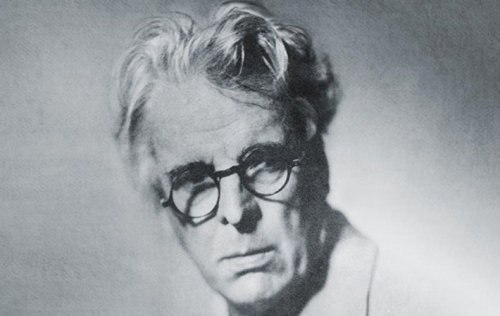
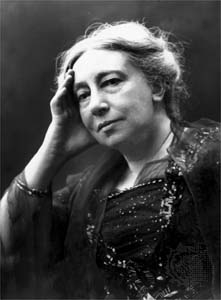 Despite cultural nativism being at its centre, Yeats’s Protestant background was shared by most of the leading figures of the movement. Among these were the Galway based aristocrat and folklorist Lady Gregory, whose Coole Park home formed the nerve centre of the movement, and the Rathfarnham born poet and playwright J.M. Synge, who later found solace in Irish peasant culture on the western seaboard as being a vestige of authentic Irish life amid a society of anglicisation. The poet’s identification with both the people and the very landscape of Ireland over the materialist England arose from his early childhood and formative experiences in Sligo, a period that would define him both as an artist as well as a man.
Despite cultural nativism being at its centre, Yeats’s Protestant background was shared by most of the leading figures of the movement. Among these were the Galway based aristocrat and folklorist Lady Gregory, whose Coole Park home formed the nerve centre of the movement, and the Rathfarnham born poet and playwright J.M. Synge, who later found solace in Irish peasant culture on the western seaboard as being a vestige of authentic Irish life amid a society of anglicisation. The poet’s identification with both the people and the very landscape of Ireland over the materialist England arose from his early childhood and formative experiences in Sligo, a period that would define him both as an artist as well as a man.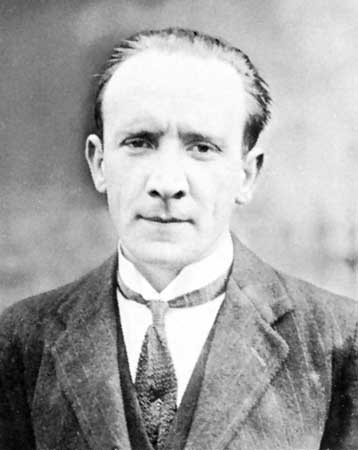 Despite some apprehension about the nature of the Easter Rising, as well as a latent sense of guilt that his work had inspired a good deal of the violence, Yeats took a dignified place within the Irish Seanad. He immediately began to orientate the Free State towards his ideals with efforts made to craft a unique form of symbolism for the new State in the form of currency, the short lived Tailteann Games and provisions made to the arts. Despite his
Despite some apprehension about the nature of the Easter Rising, as well as a latent sense of guilt that his work had inspired a good deal of the violence, Yeats took a dignified place within the Irish Seanad. He immediately began to orientate the Free State towards his ideals with efforts made to craft a unique form of symbolism for the new State in the form of currency, the short lived Tailteann Games and provisions made to the arts. Despite his 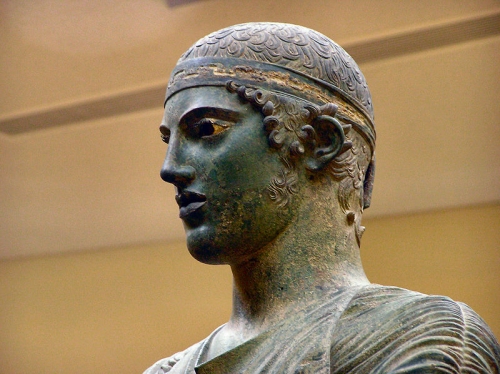

 Celle-ci naît à Vichy en 1902 et y meurt en 1943, ce qui pourrait faire penser à une existence tranquille. C’est tout au contraire un parcours semé d’aventures qui caractérise cette femme dont la première passion est le sculpture. Elle est l’élève et le modèle d’Antoine Bourdelle. Elle obtient une première consécration artistique en 1931 à la faveur d’une exposition de ses œuvres au musée du Luxembourg.
Celle-ci naît à Vichy en 1902 et y meurt en 1943, ce qui pourrait faire penser à une existence tranquille. C’est tout au contraire un parcours semé d’aventures qui caractérise cette femme dont la première passion est le sculpture. Elle est l’élève et le modèle d’Antoine Bourdelle. Elle obtient une première consécration artistique en 1931 à la faveur d’une exposition de ses œuvres au musée du Luxembourg. Voici Terne sortant de prison, disculpé et attendu dans un taxi par son épouse qui lui pardonne son aventure extra-conjugale. « Terne avait appris ce matin de bonne heure qu’il était libre et pouvait rentrer chez lui. La levée d’écrou avait eu lieu. Grisonnant, le teint sali par l’insomnie, le colonel paraissait très vieux, marchant lentement, tête basse, le long du corridor froid et sombre. Le gardien lui avait rendu ses effet. C’est-à-dire son col, sa cravate et ses lacets de soulier. Il tenait à la main le sac de toilette en cuir dont les coins s’étaient usés dans les carlingues d’avions. Terne passa la grande voûte d’entrée et se trouva dans la rue la plus lugubre de Paris.
Voici Terne sortant de prison, disculpé et attendu dans un taxi par son épouse qui lui pardonne son aventure extra-conjugale. « Terne avait appris ce matin de bonne heure qu’il était libre et pouvait rentrer chez lui. La levée d’écrou avait eu lieu. Grisonnant, le teint sali par l’insomnie, le colonel paraissait très vieux, marchant lentement, tête basse, le long du corridor froid et sombre. Le gardien lui avait rendu ses effet. C’est-à-dire son col, sa cravate et ses lacets de soulier. Il tenait à la main le sac de toilette en cuir dont les coins s’étaient usés dans les carlingues d’avions. Terne passa la grande voûte d’entrée et se trouva dans la rue la plus lugubre de Paris. 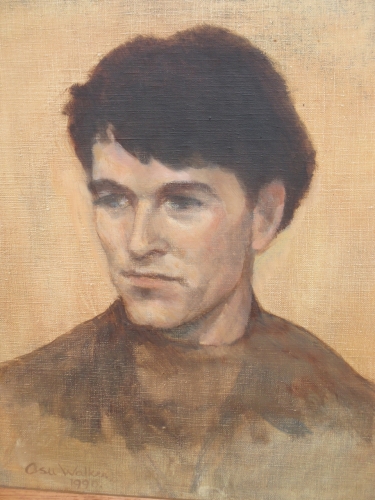
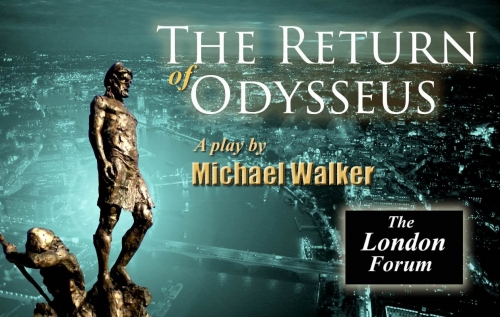
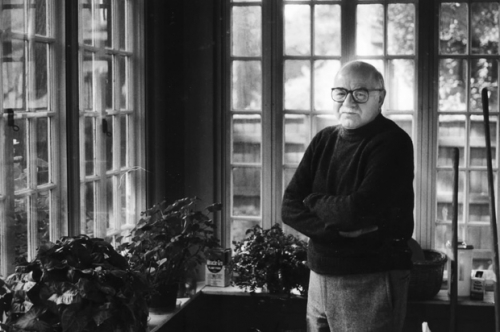
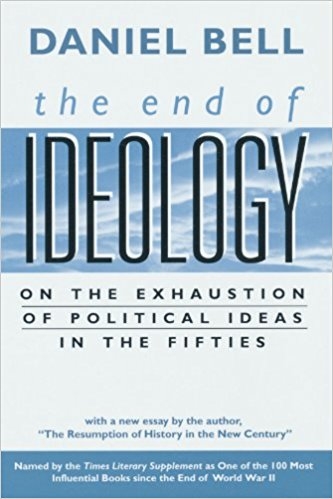 Bell’s masterwork,
Bell’s masterwork, 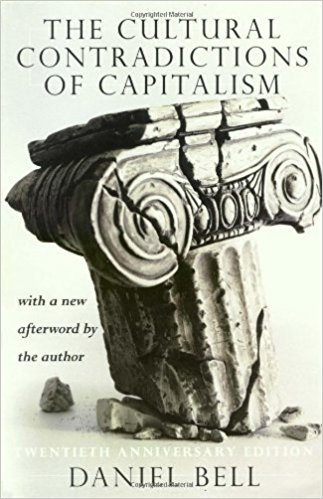 Rage against bourgeois order and embrace of Dionysian expression, said Bell, furthers the “loss of coherence in culture, particularly in the spread of an antinomian attitude to moral norms and even to the idea of cultural judgment itself.” What Bell called a consumption ethic, grafted to a life unregulated by church, family, or school, and a fun morality, were blooming into a new zeitgeist. Bell could not perfectly foresee universal smartphones, multiculturalism, or Beyoncé, for example, but he surely glimpsed the appeal of their antecedents.
Rage against bourgeois order and embrace of Dionysian expression, said Bell, furthers the “loss of coherence in culture, particularly in the spread of an antinomian attitude to moral norms and even to the idea of cultural judgment itself.” What Bell called a consumption ethic, grafted to a life unregulated by church, family, or school, and a fun morality, were blooming into a new zeitgeist. Bell could not perfectly foresee universal smartphones, multiculturalism, or Beyoncé, for example, but he surely glimpsed the appeal of their antecedents. “Despite the shambles of modern culture, some religious answer surely will be forthcoming,” Bell asserted. Religion is a “constitutive part of man’s consciousness.” It grows out of the “primordial need” for “a set of meanings that will establish a transcendent response to self; and the existential need to confront the finalities of suffering and death.” What that religion might be or become going forward cannot yet be known. The grand Western traditions were Antiquity and Church, both of them now compromised and slandered. In the contemporary
“Despite the shambles of modern culture, some religious answer surely will be forthcoming,” Bell asserted. Religion is a “constitutive part of man’s consciousness.” It grows out of the “primordial need” for “a set of meanings that will establish a transcendent response to self; and the existential need to confront the finalities of suffering and death.” What that religion might be or become going forward cannot yet be known. The grand Western traditions were Antiquity and Church, both of them now compromised and slandered. In the contemporary 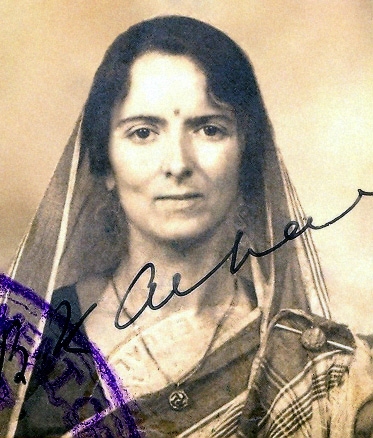
 Franck Buleux: Écrire une biographie sur Savitri Devi, c’est surtout avoir la capacité préalable, et nécessaire, d’éloigner de son propre esprit la reductio ad hitlerum dont elle a fait – et fait toujours – l’objet et, il faut bien le dire, dans laquelle elle a baigné de son plein gré. Toutefois, refuser de réduire une personne à un mythe même convenu – et accepté -est l’essence même du respect de la nature humaine, par définition complexe.
Franck Buleux: Écrire une biographie sur Savitri Devi, c’est surtout avoir la capacité préalable, et nécessaire, d’éloigner de son propre esprit la reductio ad hitlerum dont elle a fait – et fait toujours – l’objet et, il faut bien le dire, dans laquelle elle a baigné de son plein gré. Toutefois, refuser de réduire une personne à un mythe même convenu – et accepté -est l’essence même du respect de la nature humaine, par définition complexe.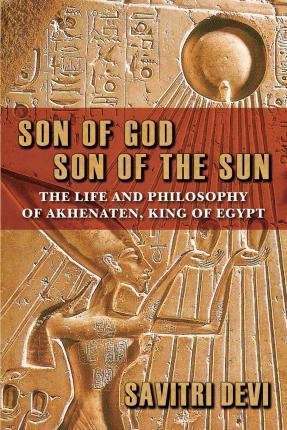
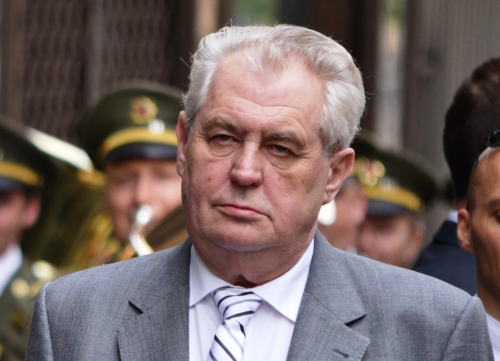
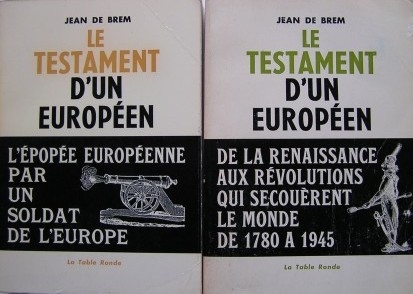
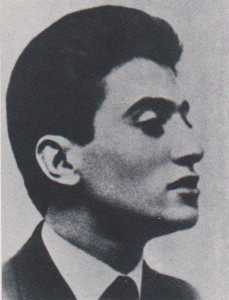 Le lieu de la mort de Jean Nicolas Marcetteau de Brem, né le 2 août 1935, est un tragique clin d’œil pour ce défenseur de la civilisation chrétienne européenne. Sous-lieutenant parachutiste, il combat en Algérie et, sous les ordres du colonel Château-Jobert, futur doctrinaire « contrerévolutionnaire », participe à l’intervention de Suez en novembre 1956.
Le lieu de la mort de Jean Nicolas Marcetteau de Brem, né le 2 août 1935, est un tragique clin d’œil pour ce défenseur de la civilisation chrétienne européenne. Sous-lieutenant parachutiste, il combat en Algérie et, sous les ordres du colonel Château-Jobert, futur doctrinaire « contrerévolutionnaire », participe à l’intervention de Suez en novembre 1956.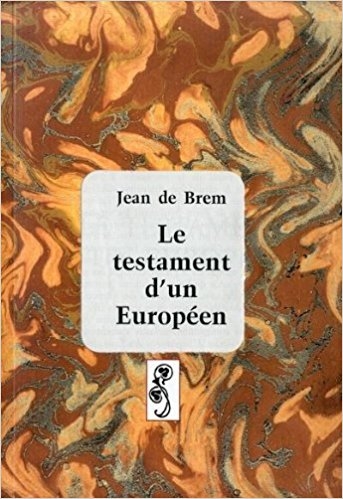 Des cinq parties, la dernière est la plus courte et la moins aboutie. Il faut préciser que Jean de Brem fut tué en pleine correction du premier jeu d’épreuves. Il prévoyait en outre un troisième volume dans lequel il eût exposé sa vision européenne. Avait-il des notes ? Ses proches ont-ils conservé ses brouillons ? Par cet ouvrage, il voulait « exalter les martyrs et les grands capitaines qui ont installé sur le monde la domination de l’Europe [… et] dénoncer les apprentis sorciers qui ont provoqué le recul de l’Occident et préparent maintenant son écrasement total (p. 12) ».
Des cinq parties, la dernière est la plus courte et la moins aboutie. Il faut préciser que Jean de Brem fut tué en pleine correction du premier jeu d’épreuves. Il prévoyait en outre un troisième volume dans lequel il eût exposé sa vision européenne. Avait-il des notes ? Ses proches ont-ils conservé ses brouillons ? Par cet ouvrage, il voulait « exalter les martyrs et les grands capitaines qui ont installé sur le monde la domination de l’Europe [… et] dénoncer les apprentis sorciers qui ont provoqué le recul de l’Occident et préparent maintenant son écrasement total (p. 12) ». 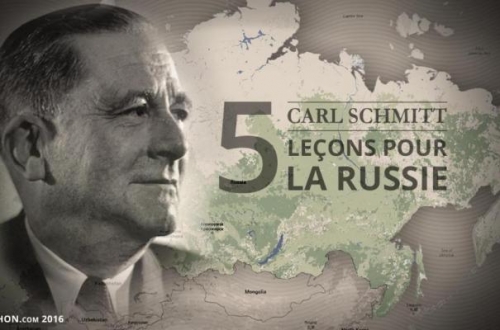
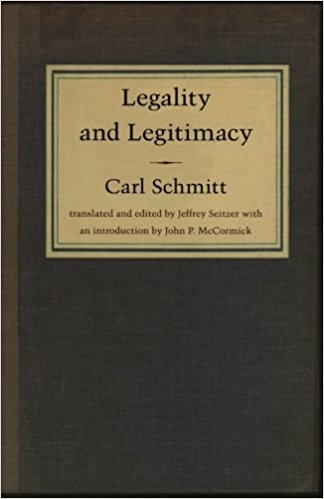 Commençant par ces conditions préalables, Carl Schmitt développa la théorie de la « guerre totale » et de la « guerre limitée » dénommée « guerre de forme », où la guerre totale est la conséquence de l’idéologie universaliste utopique qui nie les différences culturelles, historiques, étatiques et nationales naturelles entre les peuples. Une telle guerre représente en fait une menace de destruction pour toute l’humanité. Selon Carl Schmitt, l’humanisme extrémiste est la voie directe vers une telle guerre qui entraînerait l’implication non seulement des militaires mais aussi des populations civiles dans un conflit. Ceci est en fin de compte le danger le plus terrible. D’un autre coté, les « guerres de forme » sont inévitables du fait des différences entre les peuples et entre leurs cultures indestructibles. Les « guerres de forme » impliquent la participation de soldats professionnels, et peuvent être régulées par les règles légales définies de l’Europe qui portaient jadis le nom de Jus Publicum Europeum (Loi Commune Européenne). Par conséquent, de telles guerres représentent un moindre mal dont la reconnaissance théorique de leur inévitabilité peut protéger les peuples à l’avance contre un conflit « totalisé » et une « guerre totale ». A ce sujet, on peut citer le fameux paradoxe établi par Chigalev dans Les Possédés de Dostoïevski, qui dit : « En partant de la liberté absolue, j’arrive à l’esclavage absolu ». En paraphrasant cette vérité et en l’appliquant aux idées de Carl Schmitt, on peut dire que les partisans de l’humanisme radical « partent de la paix totale et arrivent à la guerre totale ». Après mûre réflexion, nous pouvons voir l’application de la remarque de Chigalev dans toute l’histoire soviétique. Si les avertissements de Carl Schmitt ne sont pas pris en compte, il sera beaucoup plus difficile de comprendre leur véracité, parce qu’il ne restera plus personne pour attester qu’il avait raison – il ne restera plus rien de l’humanité.
Commençant par ces conditions préalables, Carl Schmitt développa la théorie de la « guerre totale » et de la « guerre limitée » dénommée « guerre de forme », où la guerre totale est la conséquence de l’idéologie universaliste utopique qui nie les différences culturelles, historiques, étatiques et nationales naturelles entre les peuples. Une telle guerre représente en fait une menace de destruction pour toute l’humanité. Selon Carl Schmitt, l’humanisme extrémiste est la voie directe vers une telle guerre qui entraînerait l’implication non seulement des militaires mais aussi des populations civiles dans un conflit. Ceci est en fin de compte le danger le plus terrible. D’un autre coté, les « guerres de forme » sont inévitables du fait des différences entre les peuples et entre leurs cultures indestructibles. Les « guerres de forme » impliquent la participation de soldats professionnels, et peuvent être régulées par les règles légales définies de l’Europe qui portaient jadis le nom de Jus Publicum Europeum (Loi Commune Européenne). Par conséquent, de telles guerres représentent un moindre mal dont la reconnaissance théorique de leur inévitabilité peut protéger les peuples à l’avance contre un conflit « totalisé » et une « guerre totale ». A ce sujet, on peut citer le fameux paradoxe établi par Chigalev dans Les Possédés de Dostoïevski, qui dit : « En partant de la liberté absolue, j’arrive à l’esclavage absolu ». En paraphrasant cette vérité et en l’appliquant aux idées de Carl Schmitt, on peut dire que les partisans de l’humanisme radical « partent de la paix totale et arrivent à la guerre totale ». Après mûre réflexion, nous pouvons voir l’application de la remarque de Chigalev dans toute l’histoire soviétique. Si les avertissements de Carl Schmitt ne sont pas pris en compte, il sera beaucoup plus difficile de comprendre leur véracité, parce qu’il ne restera plus personne pour attester qu’il avait raison – il ne restera plus rien de l’humanité.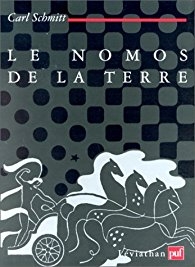 Le concept de la Décision au sens supra-légal ainsi que la nature même de la Décision elle-même s’accordent avec la théorie du « pouvoir direct » et du « pouvoir indirect » (potestas directa et potestas indirecta). Dans le contexte spécifique de Schmitt, la Décision est prise non seulement dans les instances du « pouvoir direct » (le pouvoir des rois, des empereurs, des présidents, etc.) mais aussi dans les conditions du « pouvoir indirect », dont des exemples peuvent être les organisations religieuses, culturelles ou idéologiques qui influencent l’histoire d’un peuple et d’un Etat, certes pas aussi clairement que les décisions des gouvernants mais qui opèrent néanmoins d’une manière beaucoup plus profonde et formidable. Schmitt pense donc que le « pouvoir indirect » n’est pas toujours négatif, mais d’un autre coté il ne fait qu’une allusion implicite au fait qu’une décision contraire à la volonté du peuple est le plus souvent adoptée et mise en œuvre par de tels moyens de « pouvoir indirect ». Dans son livre Théologie politique et dans sa suite Théologie politique II, il examine la logique du fonctionnement de ces deux types d’autorité dans les Etats et les nations.
Le concept de la Décision au sens supra-légal ainsi que la nature même de la Décision elle-même s’accordent avec la théorie du « pouvoir direct » et du « pouvoir indirect » (potestas directa et potestas indirecta). Dans le contexte spécifique de Schmitt, la Décision est prise non seulement dans les instances du « pouvoir direct » (le pouvoir des rois, des empereurs, des présidents, etc.) mais aussi dans les conditions du « pouvoir indirect », dont des exemples peuvent être les organisations religieuses, culturelles ou idéologiques qui influencent l’histoire d’un peuple et d’un Etat, certes pas aussi clairement que les décisions des gouvernants mais qui opèrent néanmoins d’une manière beaucoup plus profonde et formidable. Schmitt pense donc que le « pouvoir indirect » n’est pas toujours négatif, mais d’un autre coté il ne fait qu’une allusion implicite au fait qu’une décision contraire à la volonté du peuple est le plus souvent adoptée et mise en œuvre par de tels moyens de « pouvoir indirect ». Dans son livre Théologie politique et dans sa suite Théologie politique II, il examine la logique du fonctionnement de ces deux types d’autorité dans les Etats et les nations.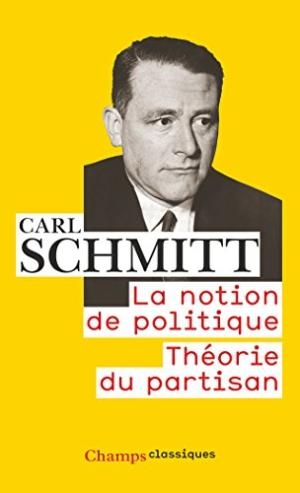 Ainsi, l’idée schmittienne du « Grand Espace » possède aussi une dimension spontanée, existentielle et volitionnelle, tout comme le sujet fondamental de l’histoire selon lui, c’est-à-dire le peuple en tant qu’unité politique. Tout comme les géopoliticiens Mackinder et Kjellen, Schmitt opposait les empires thalassocratiques (la Phénicie, l’Angleterre, les Etats-Unis, etc.) aux empires tellurocratiques (l’empire romain, l’empire austro-hongrois, l’empire russe, etc.). Dans cette perspective, l’organisation harmonieuse et organique d’un espace n’est possible que pour les empires tellurocratiques, et la Loi Continentale ne peut être appliquée qu’à eux. La thalassocratie, sortant des limites de son Ile et initiant une expansion navale, entre en conflit avec les tellurocraties et, en accord avec la logique géopolitique, commence à miner diplomatiquement, économiquement et militairement les fondements des « Grands Espaces » continentaux. Ainsi, dans la perspective des « Grands Espaces » continentaux, Schmitt revient une fois de plus aux concepts des paires ennemis/amis et nous/eux, mais cette fois-ci à un niveau planétaire. La volonté des empires continentaux, les « Grands Espaces », se révèle dans la confrontation entre les macro-intérêts continentaux et les macro-intérêts maritimes. La « Mer » défie ainsi la « Terre », et en répondant à ce défi, la « Terre » revient le plus souvent à sa conscience de soi continentale profonde.
Ainsi, l’idée schmittienne du « Grand Espace » possède aussi une dimension spontanée, existentielle et volitionnelle, tout comme le sujet fondamental de l’histoire selon lui, c’est-à-dire le peuple en tant qu’unité politique. Tout comme les géopoliticiens Mackinder et Kjellen, Schmitt opposait les empires thalassocratiques (la Phénicie, l’Angleterre, les Etats-Unis, etc.) aux empires tellurocratiques (l’empire romain, l’empire austro-hongrois, l’empire russe, etc.). Dans cette perspective, l’organisation harmonieuse et organique d’un espace n’est possible que pour les empires tellurocratiques, et la Loi Continentale ne peut être appliquée qu’à eux. La thalassocratie, sortant des limites de son Ile et initiant une expansion navale, entre en conflit avec les tellurocraties et, en accord avec la logique géopolitique, commence à miner diplomatiquement, économiquement et militairement les fondements des « Grands Espaces » continentaux. Ainsi, dans la perspective des « Grands Espaces » continentaux, Schmitt revient une fois de plus aux concepts des paires ennemis/amis et nous/eux, mais cette fois-ci à un niveau planétaire. La volonté des empires continentaux, les « Grands Espaces », se révèle dans la confrontation entre les macro-intérêts continentaux et les macro-intérêts maritimes. La « Mer » défie ainsi la « Terre », et en répondant à ce défi, la « Terre » revient le plus souvent à sa conscience de soi continentale profonde.

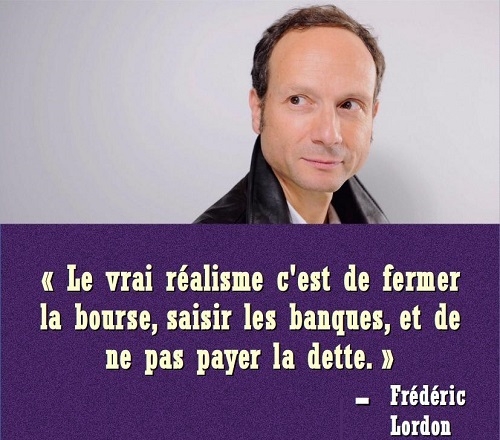
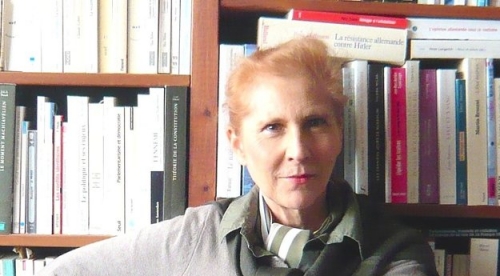
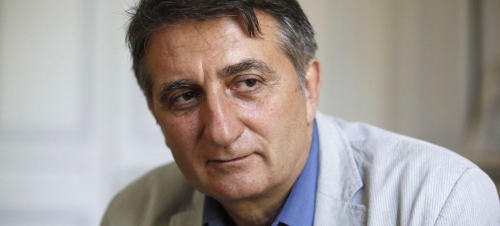


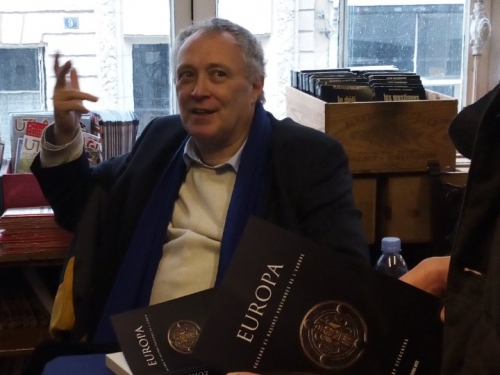
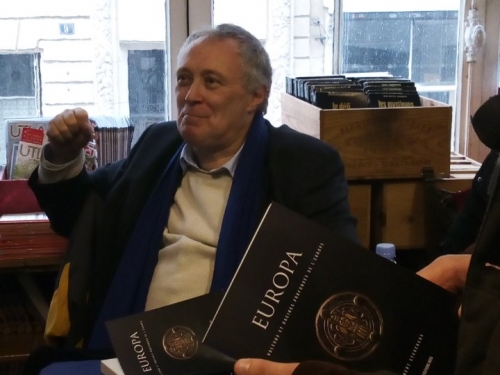

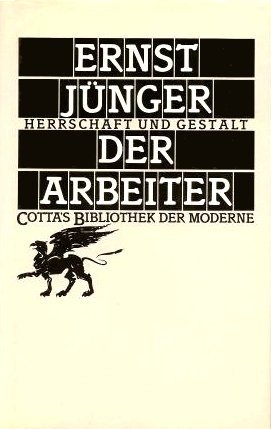 Much of this confusion stems from the fact that National Bolshevism did not have a guiding text or any kind of magnum opus for the proliferation of a workers’ state ruled by nationalist sentiment. The closest to such a founding document is Ernst Junger’s
Much of this confusion stems from the fact that National Bolshevism did not have a guiding text or any kind of magnum opus for the proliferation of a workers’ state ruled by nationalist sentiment. The closest to such a founding document is Ernst Junger’s 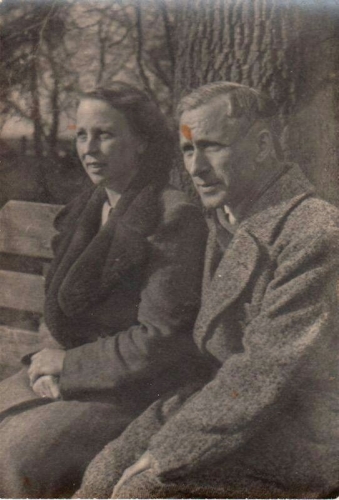 Niekisch would become the greatest propagandist for National Bolshevism during the Weimar era. His short-lived journal Widerstand would publish Junger and other German writers who wanted to mix the austere radicalism of the Bolsheviks with that frontline soldier’s dedication to nation.
Niekisch would become the greatest propagandist for National Bolshevism during the Weimar era. His short-lived journal Widerstand would publish Junger and other German writers who wanted to mix the austere radicalism of the Bolsheviks with that frontline soldier’s dedication to nation.


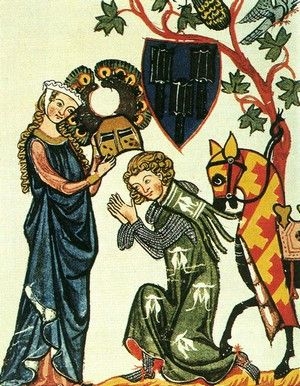 La mujer
La mujer
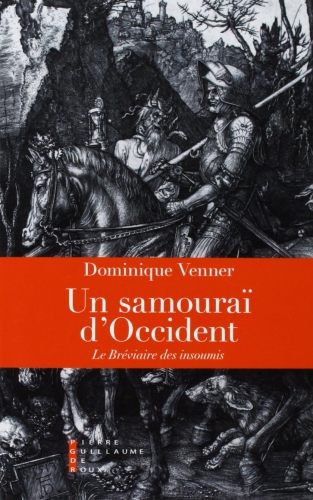 La clave: crianza
La clave: crianza



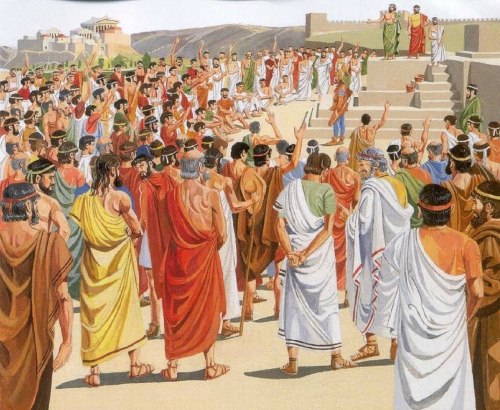



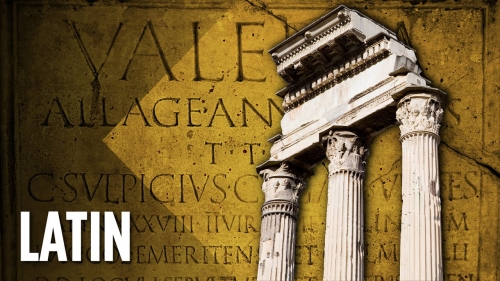
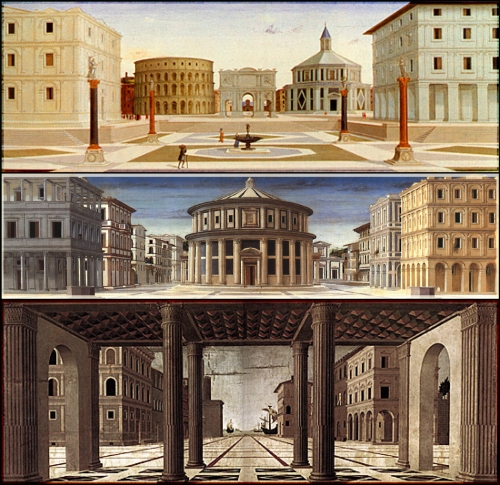
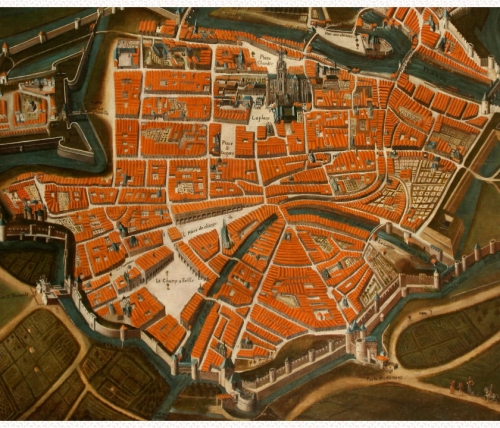
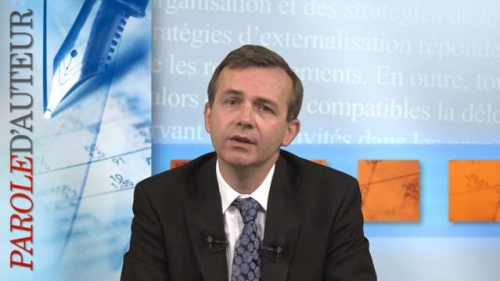
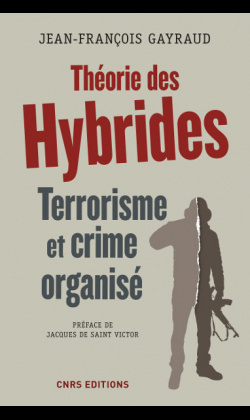

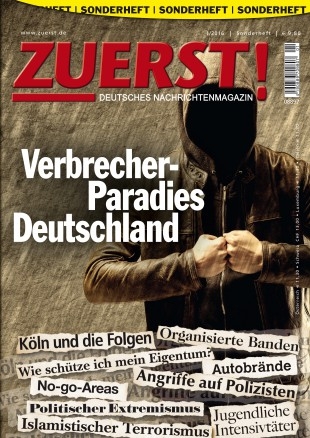 Mais il existe un exemple très connu de « publicité mensongère » : la « Deutsche Bank ». Beaucoup de gens – peut-être même certains ici dans l’auditoire – pensent que c’est notre banque nationale. En raison de son nom. Cela semble presque aussi stable et fiable qu’une « horloge suisse ». Mais la « Deutsche Bank » est une banque privée ordinaire, fortement impliquée dans des projets de spéculation hyper-capitalistes de Wall Street, une institution financière mondialiste où le mot « allemand » n’est qu’une marque. Notre banque nationale est la « Bundesbank » – « banque fédérale ». Bien sûr, « Bundesbank » semble moins attrayant que « Deutsche Bank ». Mais c’est exactement l’essence de la « publicité mensongère ».
Mais il existe un exemple très connu de « publicité mensongère » : la « Deutsche Bank ». Beaucoup de gens – peut-être même certains ici dans l’auditoire – pensent que c’est notre banque nationale. En raison de son nom. Cela semble presque aussi stable et fiable qu’une « horloge suisse ». Mais la « Deutsche Bank » est une banque privée ordinaire, fortement impliquée dans des projets de spéculation hyper-capitalistes de Wall Street, une institution financière mondialiste où le mot « allemand » n’est qu’une marque. Notre banque nationale est la « Bundesbank » – « banque fédérale ». Bien sûr, « Bundesbank » semble moins attrayant que « Deutsche Bank ». Mais c’est exactement l’essence de la « publicité mensongère ».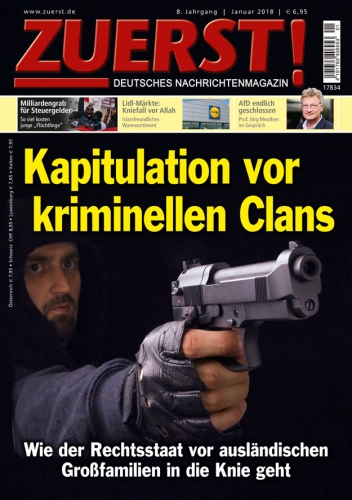 Mais l’un sans l’autre ne fonctionnera pas à la fin. Le système de l’économie virtuelle va de pair avec le système de désintégration des sociétés. Le marché libre vient avec la société ouverte et vice versa.
Mais l’un sans l’autre ne fonctionnera pas à la fin. Le système de l’économie virtuelle va de pair avec le système de désintégration des sociétés. Le marché libre vient avec la société ouverte et vice versa.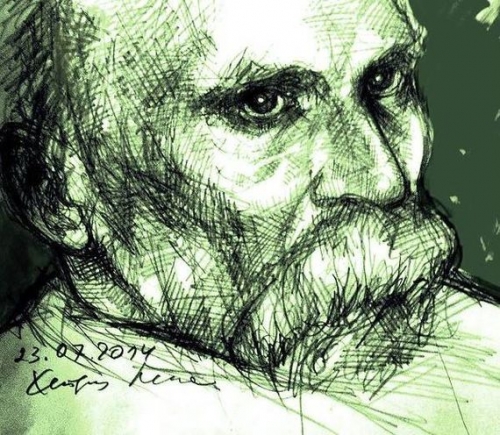
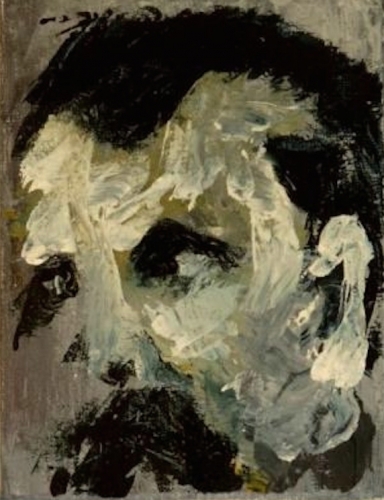
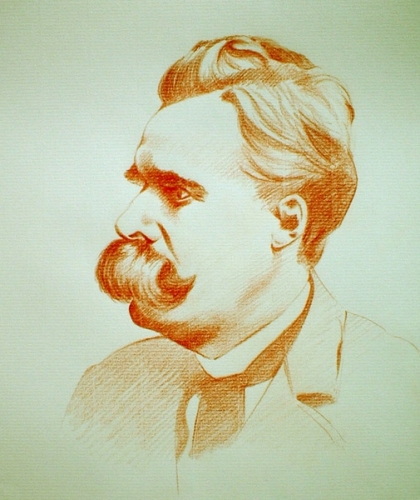
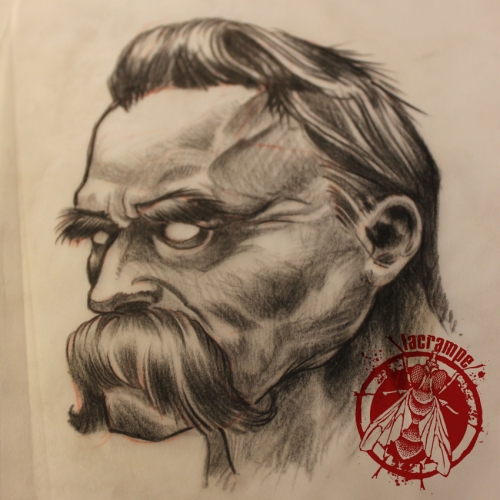
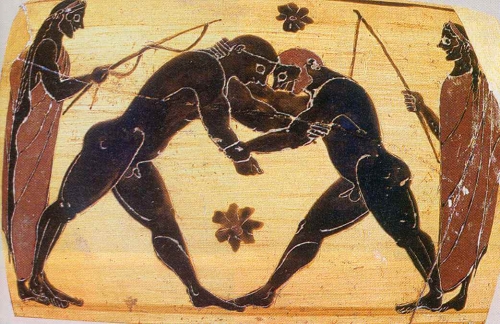
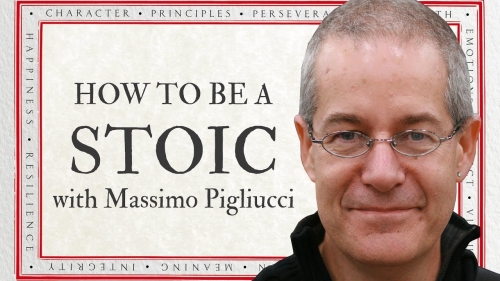
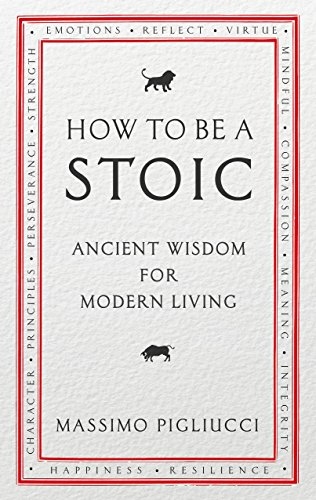 There is a lot of wisdom here. At the very least, it leads one to ask questions: What is the role of a young man with regard to the fitness and well-being of the species? What is the role of a young woman? What is the role of a European in a context of decline? And so on. Stoicism represents one powerful way in which postmodern Westerners, conquered by liberalism, can learn to stop being so frivolous, narcissistic, and selfish, and begin living our lives in a mindful and communitarian fashion.
There is a lot of wisdom here. At the very least, it leads one to ask questions: What is the role of a young man with regard to the fitness and well-being of the species? What is the role of a young woman? What is the role of a European in a context of decline? And so on. Stoicism represents one powerful way in which postmodern Westerners, conquered by liberalism, can learn to stop being so frivolous, narcissistic, and selfish, and begin living our lives in a mindful and communitarian fashion.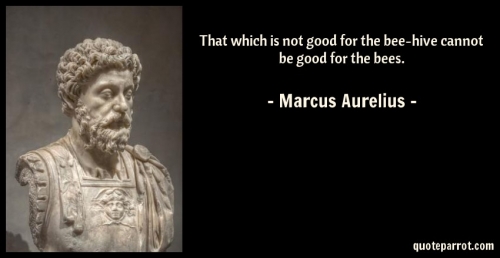

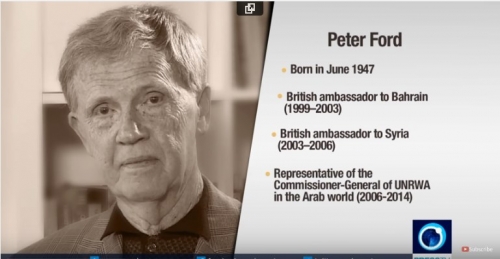
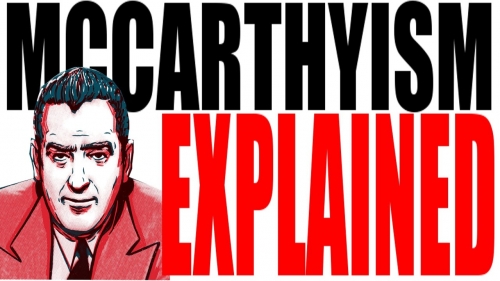

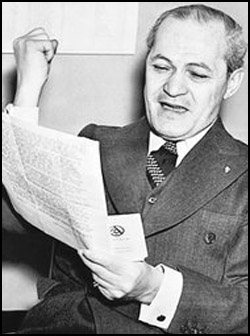 » La HUAC avait été mise en place à la Chambre des Représentants en 1934
» La HUAC avait été mise en place à la Chambre des Représentants en 1934 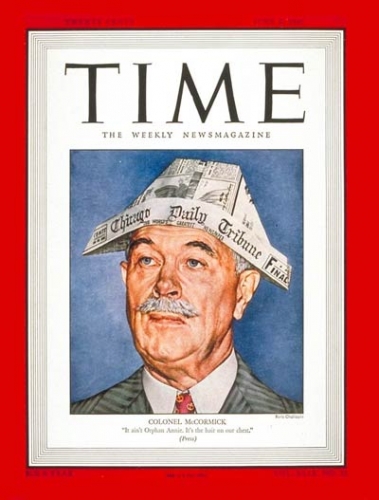 » Ce n'était que la plus visible des mesures répressives qui furent prises lors de la “Brown Scare” et qui furent ensuite réutilisées lors de la “Red Scare”. Il s’agissait d’un simple ajustement suivant le tournant de la politique étrangère américaine et un changement ultérieur de l'opinion publique américaine. Le FBI avait infiltré des groupes comme le Comité America First qui s'opposait à l'entrée des Etats-Unis dans la Seconde Guerre mondiale, il avait mis sur écoutes des dirigeants conservateurs tel que le directeur du Chicago Tribune Robert McCormick ; il suffisait alors de réorienter toutes ces procédures vers les cibles de gauche. Mais rappelez-vous l’essentiel : c’est la gauche qui lança tout cela et fit mettre en place la répression dans toute son ampleur, alors qu’elle tenait le fouet.
» Ce n'était que la plus visible des mesures répressives qui furent prises lors de la “Brown Scare” et qui furent ensuite réutilisées lors de la “Red Scare”. Il s’agissait d’un simple ajustement suivant le tournant de la politique étrangère américaine et un changement ultérieur de l'opinion publique américaine. Le FBI avait infiltré des groupes comme le Comité America First qui s'opposait à l'entrée des Etats-Unis dans la Seconde Guerre mondiale, il avait mis sur écoutes des dirigeants conservateurs tel que le directeur du Chicago Tribune Robert McCormick ; il suffisait alors de réorienter toutes ces procédures vers les cibles de gauche. Mais rappelez-vous l’essentiel : c’est la gauche qui lança tout cela et fit mettre en place la répression dans toute son ampleur, alors qu’elle tenait le fouet.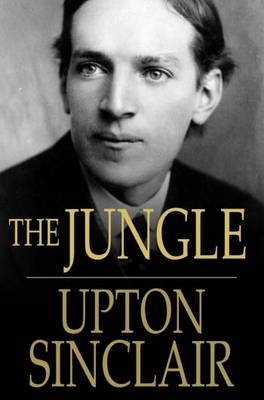 (D’un autre côté, Roosevelt, qui était d’abord un politicien roué assez éloigné de l’image idéalisée qu’on en fit et qui persiste, s’opposait aux tentatives légales d’avancement trop affirmé de la gauche radicale, comme par exemple lorsqu’il sabota indirectement la campagne de l’écrivain
(D’un autre côté, Roosevelt, qui était d’abord un politicien roué assez éloigné de l’image idéalisée qu’on en fit et qui persiste, s’opposait aux tentatives légales d’avancement trop affirmé de la gauche radicale, comme par exemple lorsqu’il sabota indirectement la campagne de l’écrivain 